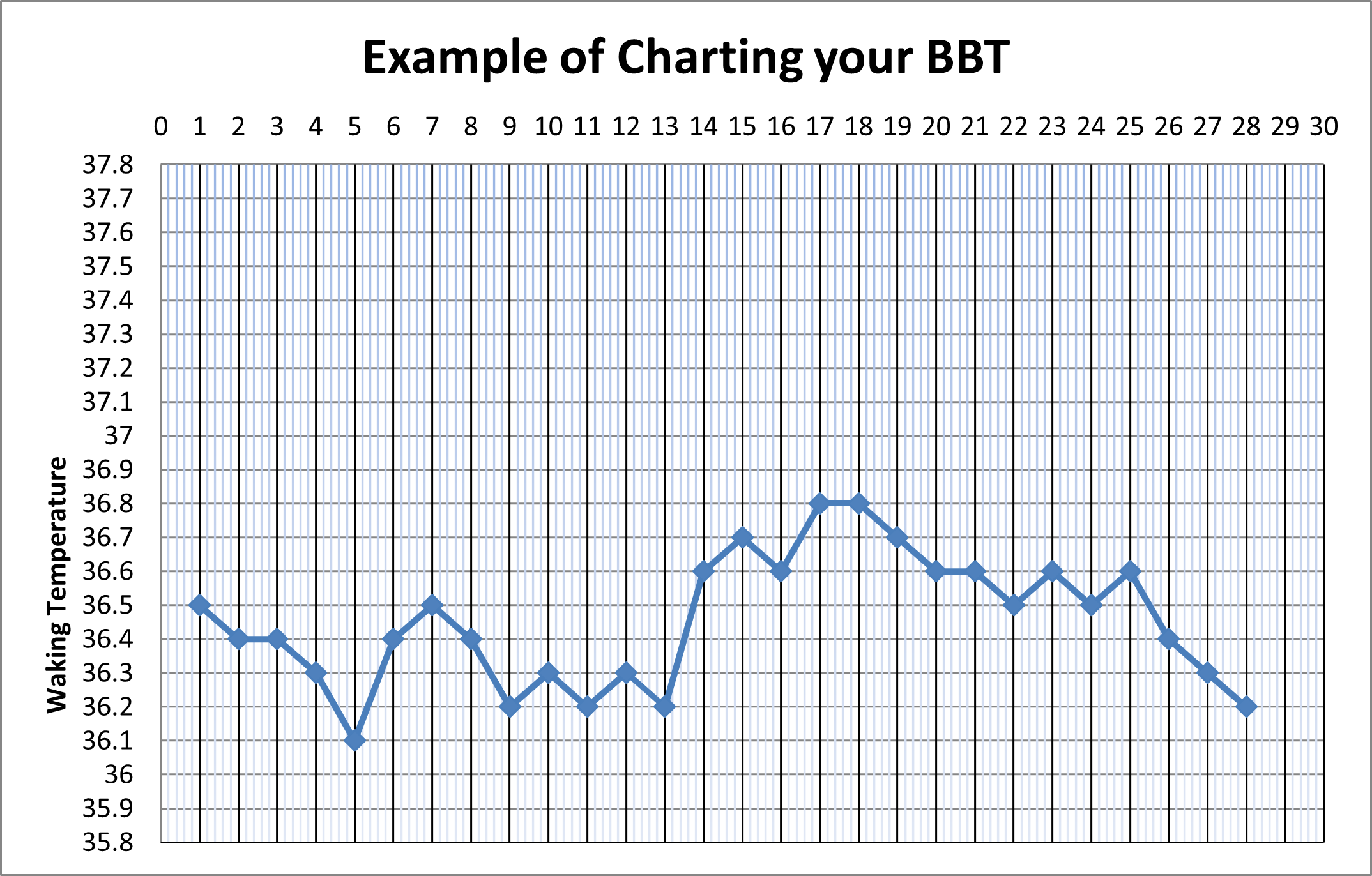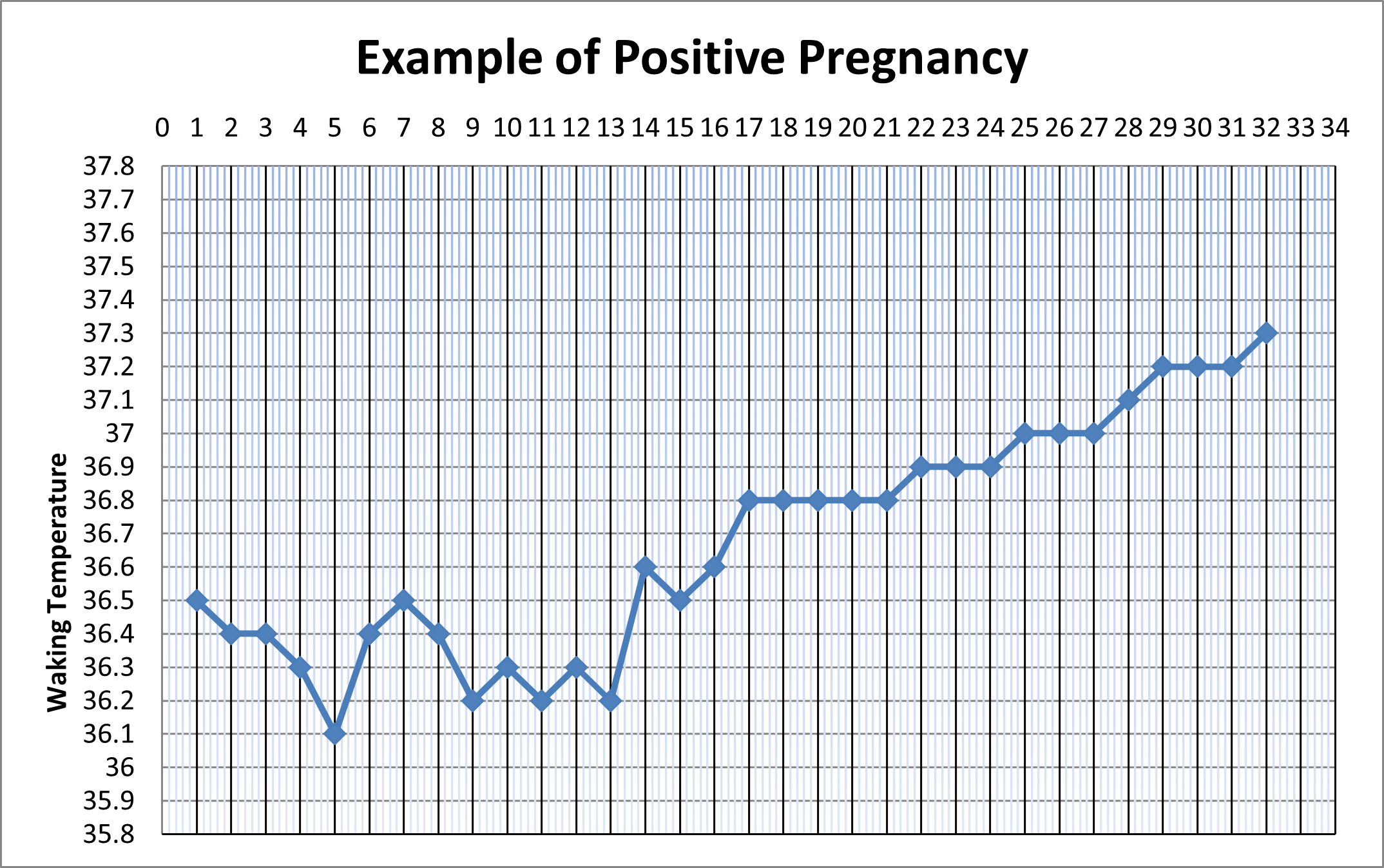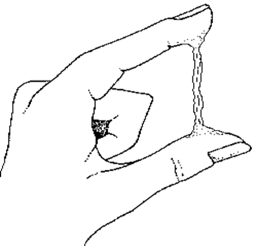Charting your menstrual cycle
Most women have about 30 days a year when they are fertile and have a chance of conceiving
For a successful pregnancy there are a range of factors that need to come together in at precisely the right time during your cycle for a healthy conception. By charting your Basal Body Temperature (BBT), recording your observations of cervical mucus (or Billings method) and other menstrual signs you can discover your optimal time for conception.
The benefit of combining these observations and keeping a record of your BBT and cervical mucus observations is that they provide complementary information. Only fertile mucous observations can tell you that ovulation is about to happen, and the temperature shift observed through charting your BBT can show that ovulation has occurred. Charting is also a powerful tool for identifying hormonal patterns that can inhibit conception and it can also identify a positive pregnancy, far earlier than other testing methods.
Tools for charting
To start charting you will need:
- A fertility chart
- A digital thermometer, which does not have to be expensive and is available from Shire Natural Fertility or your local pharmacy
- A good night sleep of at least 3-4 unbroken hours
- A pen or pencil
- Motivation!
These tools for charting need to be kept on your bedside table so that they are easily reached on waking every morning. It is important to take the BBT reading at approximately the same time each morning. If you wake later or earlier make a note of this on your chart in the section called “Conditions Affecting Temperature”. If your sleeping pattern is irregular you can use an alarm to wake up, take your temperature and then fall back to sleep.
When to start charting
For women with a regular cycle, charting starts on the first day of your period. If you have spotting or a slight bleed this is also considered Day 1 for the purpose of charting. For women who have irregular bleeding or no period, charting can start immediately, however it may take some time before a pattern emerges.
When to stop charting
Some women find that charting creates a great deal of tension, if this is the case it is a good idea to chart 3-4 cycles so a pattern emerges. However my experience is that, for most women charting becomes a personal journey and both partners are curious. Once conception and pregnancy occurs it is a good idea to continue charting for 2-3 weeks.
Charting your Basal Body Temperature (BBT)
Charting your BBT is recording your temperature on waking. It is called “basal” because it is the time when the body has deeply rested and your metabolism and temperature are at its baseline. A woman’s body temperature is largely influenced by her hormones. Your BBT rises after ovulation when your body begins to produce progesterone. In a typical menstrual cycle the temperature looks something like the chart below for a 28 day cycle. Bear in mind that all women have individual cycles when it comes to charting BBT, and this is just one example.

As you can see in the above chart on Day 13 of the cycle there is a rise in temperature of 0.4 ° Celsius which continues to remain high until day 25. This rise in temperature and continued higher temperatures is the key to identifying when ovulation has occurred. You can be fairly sure that if you have 3 higher temperatures and 6 lower temperatures, ovulation has occurred. You can also see from this chart, that on day 25 the temperature starts to decline. This indicates that the hormone progesterone is gradually declining so that a period can occur and a conception did not occur.
Factors influencing BBT
It is important to note factors that may influence your BBT on your fertility chart including; viral or bacterial infections such as the common cold or flu, alcohol consumption or changes to your normal sleeping pattern these can be noted in the section “factors affecting temperature” on the day they occur.
Identifying a pregnancy by charting your BBT
When pregnancy occurs, your temperature will continue to rise during the “luteal phase” or second half of your cycle under the influence of progesterone. As you can see from the chart below, a positive pregnancy has a distinctive pattern. From charting your BBT, you can see that a pregnancy has occurred within the first 15-20 days of conception.

Recording other details of your menstrual cycle
There is room on your fertility chart to make observations related to fluctuations in hormones that include changes to breasts, for example swelling and nipple tenderness, abdominal bloating or discomfort, changes to sleeping patterns, changes in mood or food cravings, late nights, sexual intercourse and cervical mucus observations. These can be important indications of hormonal patterns and factors which may be inhibiting conception.
Recording your cervical mucus observations on your fertility chart
Cervical mucus discharge is observed by vaginal discharge on the fingers, toilet tissue or underclothes. The “Texture” and “Amount” can be noted on your fertility chart in the appropriate section under “Cervical Mucus”, each day alongside the BBT for that day. Cervical mucus is produced by four different groups of specialized glands in response to the hormone estrogen. Recognising cervical mucus changes is important to identify your most fertile days. Be aware that cervical mucus can be affected by drugs, nutritional deficiencies, curettage, an underactive or overactive thyroid, stress, polycystic ovarian disease, tampons, lubricants, deodorants, douches, sprays and spermacides.

Cervical mucous before ovulation
Following a period there may be several dry days where the mucous is thick and pasty.
As estrogen rises in the “follicular” phase or first half of your cycle the cervical mucus becomes more liquid. This causes the vagina to feel more sticky and wet.
A peak in the hormone estrogen produces the highly fertile mucous also referred to as egg-white-like mucus or “Spinn” mucus.
This type of mucous is more stringy and stretchy and produces a more slippery sensation in the vagina.
This fertile time and the production of mucous can last between 4-6 days.

Cervical mucous after ovulation
Following the peak fertile mucous day, ovulation occurs after a surge of Luteinizing Hormone and the slippery sensation is lost. There will be a relatively abrupt return to stickiness or dryness again. This reflects the presence of progesterone produced by the corpus luteum cells of the ovum. The corpus luteum produces progesterone until an embryo implants and begins to produce progesterone on its own.
Cervical mucus becomes thick and tacky again forming a plug at the cervix acting as an impenetrable barrier to sperm. When you identify this mucous, you can be certain that you are no longer fertile and you have reached the second half or “luteal” phase of your cycle. Most women have a period 14 days after ovulation.
When am I able to conceive?
The probability of pregnancy is greatest on the day of peak cervical mucus (about 24 hours before ovulation). Depending on the health of the sperm, it can survive up to 3 days in the reproductive tract. Therefore intercourse up to 3 days prior can result in a pregnancy. However, when sperm count, motility or vitality is less than average, it is best to abstain until the day of ovulation. Conception the day after ovulation rarely results in pregnancy. So once you have seen a temperature rise (3 higher temperatures) you can assume that pregnancy is no longer possible.
